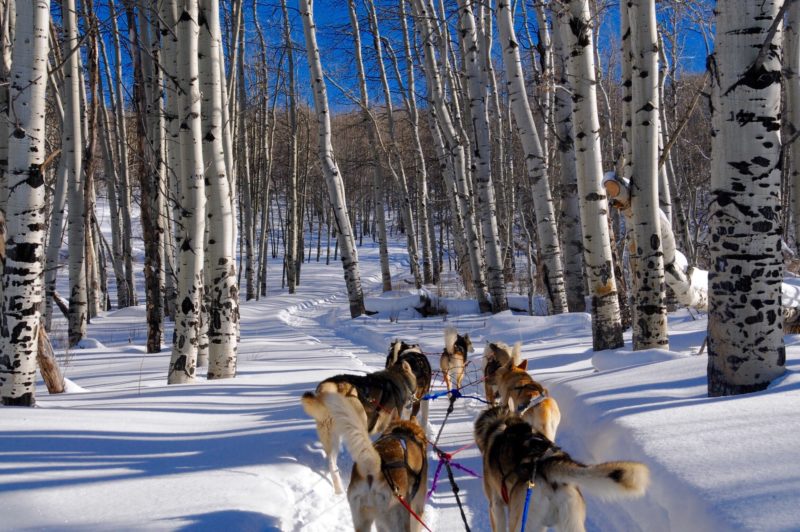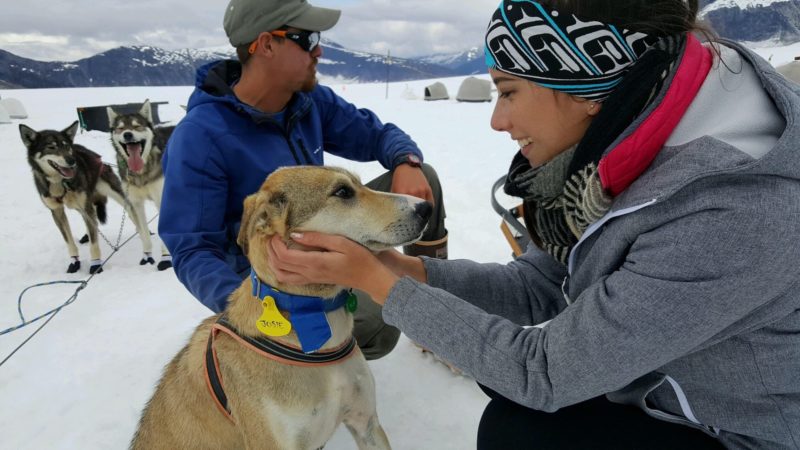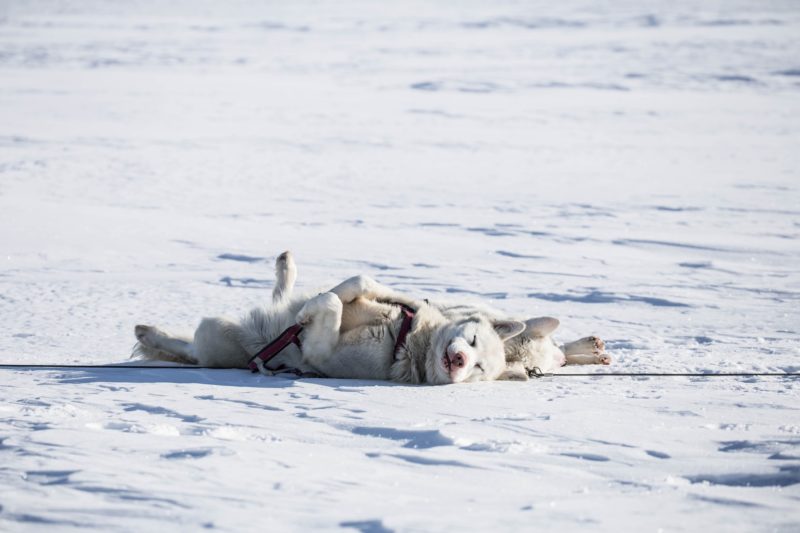4 Things Sustainable Travellers should know
Sustainable travellers are often inundated with glossy images of exciting rides through pristine natural environments. But for many, the practice is a controversial one.
Dog sledding is an activity that involves being pulled along in a sled by dogs, usually huskies. As with most things when trying to live a more sustainable life, the picture is a complex one. So let’s dig a little deeper to get to the bottom of this complex issue.
The Environmental Benefits of Dog Sledding
There are certainly environmental advantages to eschewing motorized transport and opting for self-powered or animal-powered means of transportation. The carbon cost of travelling by skidoo or snowmobile is obviously higher, due to the burning of fossil fuels.
Dog sledding also has a far less damaging impact on the pristine snow-clad environments that you have travelled to see. A well-managed dog sledding operation can give sustainable travellers access to beautiful settings without polluting those environments.
 Quietly gliding across the landscape will also have less negative impact on the wildlife that calls the area home. Loud motors can disrupt the breeding cycles of a range of species, force them to flee traditional feeding grounds, or lead them to go to ground when they need to be out hunting or feeding.
Quietly gliding across the landscape will also have less negative impact on the wildlife that calls the area home. Loud motors can disrupt the breeding cycles of a range of species, force them to flee traditional feeding grounds, or lead them to go to ground when they need to be out hunting or feeding.
Some might say that it would be better for people not to visit such pristine natural environments at all. Certainly, there are arguments to suggest that access should be strictly regulated and controlled. But there are also benefits to allowing people to access the natural wonders of this planet we call home. The more people can see for themselves the beauty and fragility of nature, the more they will love it and the more inclined they will be to protect it.
Animal Cruelty Concerns Surrounding Dog Sledding
All too often, people have an anthropocentric view. We often look at human beings as the centre of the universe, and consider ourselves (either consciously or subconsciously) as superior to and more important than other forms of life. This is wrong.
To improve sustainability, we must move away from the idea that the world and its creatures are here to serve us. We must not view ourselves as higher, separate and above, but as an integral part of an interconnected system. Animals were not put on this planet for our use. They are also precious living beings on our planet.
Unfortunately, animals are often treated abhorrently in today’s world. Veganism is an ethical response, valid to address both animal cruelty and environmental concerns surrounding livestock and food production. Animals are also mistreated in the name of fashion, or even just for sport. Sadly, the world of dog sledding can often be no different.
Horror stories of animal cruelty can be found in dog sledding operations around the world. In some areas, dogs are chained when not running. They can sometimes be abused by those who run them, and even killed when no longer ‘paying their way’, as in this tragic case. It is clear that in certain parts of the world, urgent reform is required.
The broader picture
But it is important to remember that it is not dog sledding itself that is to blame for these horrendous animal rights abuses. In farming, sustainable non-vegans do often argue that humane livestock farming can be ecologically sound.
In fact, integrating livestock into agro-ecological food production systems can be more eco-friendly than arable-only systems. Whether or not you eat meat is a moral question for an individual. The same holds true about whether or not you feel comfortable with riding a horse, mule or donkey, for example. Or relying on dogs to pull a sled.
As in other fields, it is arguably not the activity itself that is unethical, but the behaviour of humans surrounding it.
Do Dogs Enjoy Pulling a Sled?
Whether or not you feel that it is ethically sound to enjoy dog sledding (providing no abuses are taking place in the operation), will likely depend on whether or not you believe that the dogs also enjoy the activity.
Personally, as a ovo-vegetarian who lives with a dog (I do not say I ‘own’ him), I am happy with dog sledding, providing that the operation is a sustainable one and I am fully assured that the animals and environment are properly cared for throughout the year.

Dog Sledding Camp / Photo: ALLISON GRAY
While I do not condone treating animals as property, or slaves, I see sustainable dog sledding as comparable to horse riding, or to working with animals on a traditional, sustainable farm. It is less a relationship of master and slave than it is a co-operation. Of course, abuses occur. But where the animals are treated kindly and with respect at all times, they can work happily in harmony with humans.
It is important to remember that, like horses and other such animals, dogs have evolved and been bred to forge close connections with humans. Dogs have evolved in harmony with us, and as someone who lives with a dog, I know that they love us, and love to please us. Working dogs do gain satisfaction from the approbation of those who work with them.
Dog body language is easy to read for those who spend time around them. Those who operate sustainable and ethical dog sled operations can see that dogs love to run. When well cared for, the dogs enjoy the dog sledding as much as we do.
Choosing a Sustainable Dog Sledding Tour
If you are happy that the activity itself is not an immoral one, then you may wish to find a dog sledding tour to enjoy on your sustainable travels. It is important to remember that where you undertake your tour will be important. In some countries it will be far easier to find a cruelty-free and well-run ethical option than in others. As with other ethical decisions, it is important to do your research.

Sledding Dogs Having Fun / Photo: James Padolsey
5 things you should consider
1. How are the dogs treated on a daily basis? not only during the dog sledding season but also for the rest of the year? Are they well treated, loved, and not chained during summer but given other ‘jobs’ to do?
2. How are dogs fed? (Ideally with ethical, locally sourced food). Do they sleep comfortably and indoors?
3. Is there a strong rapport and understanding between dogs and their handlers?
4. Do they get adequate rest time between runs?
5. How the operation handles the management of trails? Does the company take measures to conserve the local environment and wildlife?
One final thing to consider when it comes to the sustainability of dog sledding is how integrated the company running the tour is with the local community. Does the company consciously keeping sustainable traditional practices alive? Are they providing sustainable jobs? Do they feed funds back into the local area, for the benefit of the local population?
If the answer to some or all of these questions is no, then dog sledding may best be avoided. But when such conditions are met, dog sledding could be an ethical activity for sustainable travellers.
Related post :
-
By Positive Travel   |1st December 2020Emotive Design Series Showcases the Marine Animals Who Are at Risk of Extinction Our brand new design series is visually ...
-
By Positive Travel   |14th September 2020And how to make conscious travel decisions It is enough to Google “sustainable travel” to get millions of answers from: ...
About
Travel Inspiration and Inside from Positive Travel


